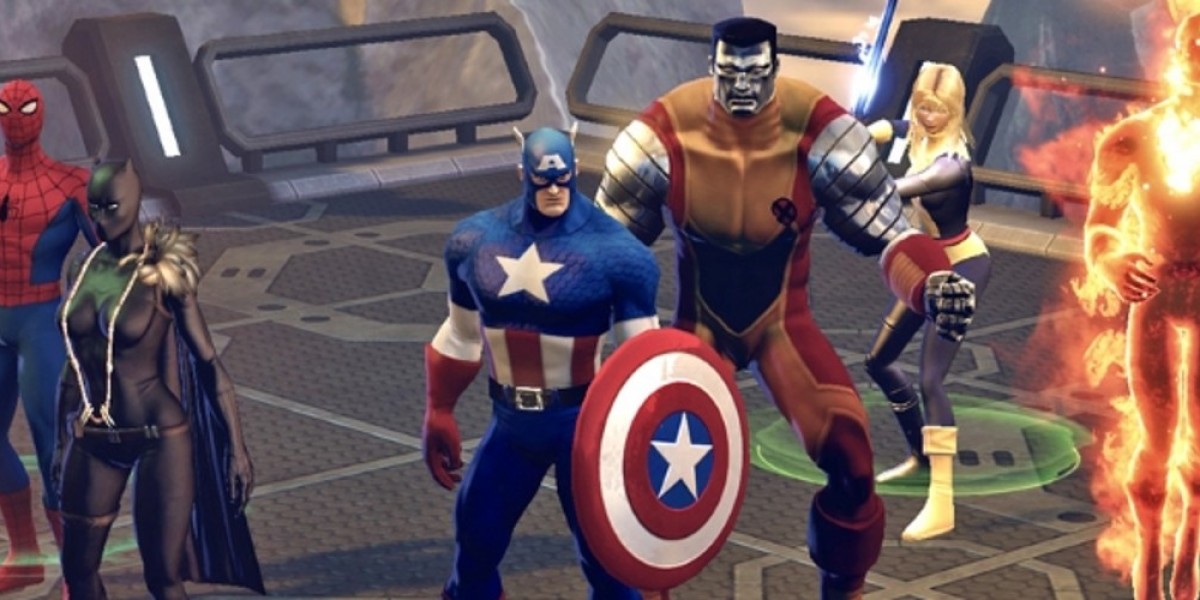MMO Industry Outlook for 2016
As we reflect on last year's predictions and acknowledge our missteps and successes, it’s time to turn our gaze toward the future of the MMO landscape in 2016. This year, our forecasts are a product of deep analysis and a touch of bold imagination, with contributions from dedicated Patreon supporters adding to the mix.
Firstly, the overall health of the global MMO market appears to be on a decline. Subscription numbers for major titles like World of Warcraft are expected to dip, despite a potential surge with the launch of the Legion expansion. However, this spike will be short-lived, with subs falling below the 4 million mark by year's end. Meanwhile, Eve Online’s subscriber base should mirror this downward trend, though interestingly, peak daily logins might see an uptick post-Citadel expansion, indicating increased engagement despite declining total subs.
Innovation in monetization models will continue to emerge. We anticipate more large-scale crowdfunding initiatives resembling Dota 2’s The International compendium or Path of Exile’s founder’s packs, providing alternative revenue streams for developers and fostering closer community involvement.
E-sports will maintain momentum, with mainstream sports channels increasing coverage of major MOBA tournaments and a proliferation of official e-sports organizations and training academies. The competitive scene will become more crowded, especially among team-based shooters. Titles such as Overwatch, Gigantic, Paragon, Battleborn, Paladins, Wildfire, Battlecry, and LawBreakers will vie for attention, each exploring different niches—be it hybrid MOBA-shooter gameplay, focus on competitive esports, or casual play. Market saturation may lead to some titles fading into obscurity, leaving only those with strong e-sports backing to thrive.
On the crowdfunding front, Star Citizen’s momentum is expected to slow after surpassing the $100 million milestone. The surge was driven by recent alpha releases, controversy surrounding Derek Smart, and aggressive marketing campaigns. However, without continued fervor, pledges will likely plateau around $105 million, with some estimates suggesting a final tally between $120 and $125 million if marketing efforts persist. Development progress for Star Citizen will remain steady but cautious, with no dramatic surprises on the horizon.
In summary, 2016 will be characterized by declining subscriptions, innovative monetization efforts, a competitive e-sports scene, and the gradual winding down of one of the most ambitious crowdfunding projects in gaming history. The landscape will evolve, but the passion and creativity fueling the genre will ensure it remains dynamic and compelling.
In the coming year, the MMORPG landscape is poised for notable shifts and surprises. Anticipate a resurgence for World of Warcraft around September, driven by the launch of Legion; however, Blizzard’s silence on official numbers suggests this boost may be short-lived, with a swift decline expected within half a year.
Star Wars: The Old Republic is set to expand significantly by summer, fueled by the momentum from new movies and likely a related expansion. Fans might see a nod to the Mustafar planet, reminiscent of Star Wars Galaxies’ tie-ins. Meanwhile, titles like TERA, Path of Exile, and Marvel Heroes will continue their profitable streak unnoticed by the mainstream, whereas WildStar seems unlikely to sustain its momentum. Unexpectedly, Lost Ark could emerge as the surprise hit of the year, capturing players’ interest abroad.
Turbine faces a pivotal year; it’s unclear whether the studio will introduce a new game or exit a current project, but uncertainty hangs over its future. Trion Worlds appears poised to unveil two additional pseudo-MMORPG titles—one importing an existing concept and another developed in-house. Final Fantasy XIV is expected to receive another expansion, while Guild Wars 2 will focus on substantial updates aimed at reconnecting with its dedicated fanbase after a rocky 2015.
In the PvP and RVR arenas, Crowfall and Camelot Unchained will compete fiercely for players, each striving to maintain their niche. Meanwhile, Lord British’s Shroud of the Avatar will quietly continue attracting roleplayers and PvE enthusiasts, as Revival’s ongoing development mystifies the community.
Beyond traditional MMORPGs, multiplayer sandbox titles like Ark and ARPGs such as Marvel Heroes will keep drawing attention, though the overall market remains crowded. The year will also see the release of numerous MOBAs, MMO real-time strategy games, and online shooters—many of which will struggle to make a significant impact. Virtual reality remains cautious; consumer adoption persists as skepticism dominates the conversation. Destiny’s PC port is finally anticipated, whereas The Division’s launch continues to be delayed.
On the development front, Daybreak Games’ announcement about restarting EverQuest Next from scratch might be a joke, but realistic expectations suggest we’ll hear substantial updates about the project next year—though fears and uncertainties have already cast a shadow.
Overall, 2016 is expected to mirror 2015’s recovery phase for the MMORPG industry. Traditional large-scale theme parks will remain scarce, and existing games will either evolve or falter. Meanwhile, new titles are increasingly blending genres, signaling a shifting landscape that prioritizes innovation over nostalgia.
In 2016, the landscape of massively multiplayer online games saw a mix of new developments and ongoing challenges. World of Warcraft's Legion expansion launched in July, receiving praise for its systems and engaging leveling experience. However, the endgame content faced criticism, prompting quick adjustments such as making challenge mode dungeons queueable and shifting towards more token-based rewards. Despite these efforts, the game continued to suffer from content droughts, leaving players bracing themselves for another year without significant new material.
Meanwhile, Final Fantasy XIV maintained its steady growth with regular updates that resonated well with its community. The upcoming second expansion was announced for late in the year, promising more substantial content. A major feature update centered around enhancing the housing system, giving players greater freedom in purchasing homes. The game's marketing efforts also intensified as the year progressed, aiming to attract more players and sustain its momentum.
Guild Wars 2 experienced some setbacks following the Heart of Thorns expansion, with community feedback highlighting a lack of activities once the core content was completed. The development team seemed to deprioritize raiding, and by the time a new content update was announced, the focus appeared to have shifted elsewhere.
Star Wars: The Old Republic continued to develop its story-driven approach, introducing a mid-year expansion emphasizing cooperative gameplay with two-player challenges and diversified reward structures to foster team play. Wildstar struggled to capitalize on its post-acquisition popularity but persisted with updates and rumors of a forthcoming free-to-play expansion. Star Trek Online announced plans for a new expansion bringing in elements from the Gamma Quadrant, while The Elder Scrolls Online revealed its first buy-to-play expansion.
Other titles like Elite: Dangerous kept adding features reminiscent of Star Citizen's ambitions, albeit without the fanfare, as Star Citizen's development delays dampened enthusiasm among its backers. The Repopulation faced significant hurdles due to engine issues, requiring substantial effort to recover, whereas Blade & Soul launched modestly but secured enough of a foothold to ensure its continued presence in the market.
This year also marked a period of anticipation and renewal, with two new MMOs announced and major titles like Crowfall entering large-scale testing phases. Existing games sought to innovate and escape stagnation, making 2016 a year of looking forward with optimism. If 2015 was about recovery, 2016 was characterized by a collective excitement for what lies ahead.
Upcoming MMO Trends
Imagine a year filled with surprising twists and bold predictions in the MMO universe. Rumors swirl that Funcom might finally reveal an Anarchy Online sequel, sparking excitement among loyal fans eager for a new chapter in the classic universe. Meanwhile, Daybreak Games could make significant strides, revitalizing Landmark, enhancing H1Z1’s survival mode, and reigniting discussions about EverQuest's future. Unexpectedly, Trion Worlds might resurrect a long-defunct MMO, catching everyone off guard with their choice.
In the blockbuster realm, Blizzard is projected to continue its lucrative streak, maintaining World of Warcraft’s subscriber base around the seven million mark by year’s end. Cryptic Studios might unveil a new project centered on a beloved IP, with a release window set for early 2017, exciting fans of the developer’s signature style. On the other hand, Star Citizen’s development could face multiple delays, stirring unrest among its dedicated community.
Guild Wars 2’s expansion plans may take an unconventional turn, with Arenanet announcing a dramatic “nuking” of Cantha—an area players have long requested to revisit—just to put an end to ongoing requests. Meanwhile, BioWare’s next chapter in the Star Wars: The Old Republic storyline could deliver a shocking twist, revealing a new narrative jump that places players directly alongside upcoming movie events, blurring the lines between game and cinematic universe.
Anticipating the future of MMOs often feels like a gamble, yet I find myself holding onto hope despite the odds. This genre remains my favorite, and even though other game types have waned in my interest, MMOs continue to captivate me. For the upcoming year, I dare to predict an unexpected revitalization within the genre, fueled by fresh developments and renewed enthusiasm.
A major catalyst for this potential comeback could be the emergence of innovative titles such as Star Citizen. While I might not personally dive into the game, I believe it is poised for a significant surge in popularity. It has already surpassed initial expectations, and its success doesn’t necessarily hinge on a massive launch akin to blockbuster single-player titles or major console releases. Instead, its strength lies in cultivating a dedicated niche similar to that of Eve Online—a loyal community that finds everything they seek within this universe.
Furthermore, I sense that Daybreak Games is on the cusp of a turnaround. The company appears to be regrouping, waiting patiently for the perfect moment to reintroduce its portfolio of games with renewed vigor. Next year, we might witness a notable upheaval or strategic shift that signals its return to prominence, convincing players and critics alike that the company has regained its confidence.
However, I must acknowledge the possibility that all my predictions could be upside down. 2016 might turn out to be a pivotal year where the fate of MMOs is decided—either flourishing or faltering. Despite some titles finding success, I believe that only a couple of key players hold the potential to shape the future trajectory of the genre.
Lastly, not all forecasts are optimistic. I foresee that World of Warcraft’s Legion expansion may not meet expectations, potentially leading to continued subscriber decline. If that happens, the game’s momentum could slow further, impacting its standing in the evolving MMO landscape.
Emerging Trends in MMO Gaming
Many new MMO projects will likely emerge in the coming year, fueled by ambitious Kickstarter campaigns. However, a significant number may struggle to secure sustained funding, resulting in halted development and eventual abandonment. Fans' expectations will probably soar initially, only to be dashed when these titles fail to materialize or meet promises. Despite these trends, individual players might still find it challenging to commit to a single game, often jumping from one to another without settling down. Overall, the landscape seems poised for continued cycles of hope and disappointment, with little change in personal gaming habits.
In the coming year, the gaming landscape is poised for an explosion of diverse titles, from massive multiplayer online games to action-packed ARPGs. The sheer volume of new releases will be overwhelming, leading gamers to seek innovative solutions for managing their busy schedules. Personal gaming assistants—smart software that organizes raid times, PvP battles, guild events, and daily quests—will become essential tools, helping players stay on top of their commitments and maximize their gaming experience.
This surge in activity will also spawn a new niche of service providers offering specialized support. Expect to see subscription plans that include password management, reminders to take breaks or eat, and even on-demand delivery of snacks or caffeine via premium add-ons. For a premium fee, users might also pay for quick messages to family or friends, ensuring they stay connected while immersed in virtual worlds. This emerging industry of digital concierge services could turn into a lucrative career path for those with the right knack for organization and tech.
Meanwhile, the definition of an MMO will evolve significantly. The industry will shift towards the concept of "many"—many players, many servers, many experiences—embracing the idea of private shards and customizable multiplayer environments. Whether it’s just you and a few friends or a larger community, the focus will be on flexible, intimate multiplayer experiences rather than sprawling universes. It’s likely we’ll see slogans celebrating personalized multiplayer adventures, emphasizing that gaming is about shared moments with select groups rather than mass audiences.
And of course, the fantasy element remains resilient. Expect dragons to continue reigning supreme in game worlds, possibly accompanied by whimsical creatures like dinosaurs in tutus. These fantastical beasts will be a staple, serving as symbols of the creative and unpredictable nature of future game design. As 2016 approaches, it’s clear that the gaming universe will become even more vibrant, diverse, and tailored to individual players’ desires—and perhaps, a little more fantastical with every new release.
In 2016, the gaming industry’s trajectory will largely depend on how the division performs. Success here could herald a wave of AAA titles embracing the essence of Destiny and The Division—what some are calling KMMO, or kinda massively multiplayer online games. Rumors suggest a fantasy KMMO might soon be unveiled, signaling a shift towards more niche, community-driven experiences.
Meanwhile, game developers will increasingly prioritize small-team tactics, reminiscent of classic multiplayer modes, focusing on intense, player-versus-player engagements. However, if these efforts falter, the industry’s major multiplayer projects will pivot towards replicating the success of titles like Hearthstone or League of Legends, aiming for quick, high-impact hits rather than expansive worlds.
Indie studios will lead the charge in new MMO ventures, exploring more fragmented community segments. Crowdfunding campaigns will target hardcore fans, reviving the spirit of classic MUDs—text-based worlds for nostalgic veterans—or introducing gank-focused environments where player power scales with time invested. These projects will often feature minimalist UI design, with most of their budgets funneled into creating humorous or humiliating emotes that capture player attention.
On the neutral front, established titles like Guild Wars 2 will continue their steady evolution, though they may struggle to penetrate the esports scene they aspire to dominate. Expect no major expansions, just incremental content updates. Eve Online will maintain its stable course, with ongoing quality-of-life improvements and increased hype around CCP’s upcoming VR project. Interestingly, Ark: Survival Evolved might reveal an imaginative twist—claiming the entire game universe is built upon a colossal dinosaur, which players can tame and use to launch attacks on rival servers.
The industry’s less fortunate will see some disappointments. Black Desert, despite its initial appeal, will lose steam after losing several unique features and failing to sustain hype. Chronicles of Eyria, with its controversial pay-to-reincarnate mechanic, will continue to perplex players despite its potential. Destiny’s player base will dwindle due to stagnation; without substantial new content, anticipation for Destiny 2 will build throughout the year. EverQuest Next, while not canceled, will remain shrouded in silence, struggling against fierce competition and little new information. Lord of the Rings Online will scramble to reach Mordor before its dwindling population forces a shutdown, eventually going into maintenance until a Ringwraith’s betrayal takes down its servers.
Yet, 2016 will also be a year of cautious optimism. Star Citizen will progress steadily, if slowly, toward fulfilling its ambitious promises. Technical and financial hurdles will lead to some features being scaled back, prompting criticism from skeptics, but the project’s persistent presence and transparency will keep goodwill alive. Crowfall will begin to take shape, polarizing some players while attracting others—demonstrating that innovative MMOs can be built on modest budgets. Camelot Unchained will continue its promising development cycle, fueling hope among its community. Overall, the industry will be watching closely, as several crowdfunded titles and international imports attempt to prove that new MMO development can still thrive in a competitive landscape.
What are Blade & Soul NEO Divine Gems and Why They're Essential for Players?
Blade & Soul NEO Divine Gems serve as the essential in-game currency in Blade & Soul NEO, enabling players to upgrade their gear, unlock exclusive cosmetics, and enhance their characters’ abilities for more challenging content. These Divine Gems can be conveniently obtained by topping up via trusted game trading platforms such as OffGamers, MmoGah, and G2G. By securing Blade & Soul NEO Divine Gems through these reputable sites, players gain a valuable advantage in progressing swiftly and personalizing their gameplay experience.
Why choose LootBar.gg to buy Blade & Soul NEO divine gems?
If players are looking to top up Blade & Soul NEO Divine Gems, they may want to consider using the lootbar game trading platform. As a trusted marketplace in the gaming community, lootbar.gg provides a seamless and efficient experience for anyone wishing to Buy BNS NEO Divine Gems , ensuring that players can enhance their gameplay without unnecessary hassle.
One of the main advantages of choosing lootbar is its commitment to offering competitive prices, often featuring regular discounts and special promotions for BNS NEO. Security is also a top priority, with advanced encryption technology guaranteeing that all transactions remain safe and confidential. Additionally, lootbar.gg delivers professional 24/7 customer support, so players can get assistance whenever they need it, and prides itself on quick delivery, ensuring that Divine Gems are added to your account without delay. These benefits make lootbar an excellent choice for anyone looking to conveniently and securely Buy BNS NEO Divine Gems.
Steps for Blade & Soul NEO Divine Gems purchase on LootBar
To Buy Blade & Soul NEO Divine Gems on the Lootbar trading platform, start by visiting the official LootBar.gg website and selecting your desired language and currency for a personalized experience. Next, log in with your existing LootBar account, or create a new one if you're a first-time user. Navigate to the Game Coins section, locate Blade & Soul NEO Divine Gems, and choose the amount of NEO Divine Gems you wish to purchase based on your in-game needs.
After selecting your product, click the "Buy Now" button to proceed. Pick a payment method that works best for you, then confirm your purchase by clicking "Pay Now." Once payment is complete, follow the on-screen instructions to upload an image of your in-game item as required. Finally, launch Blade & Soul NEO and verify that the Divine Gems have been credited to your account, ensuring a smooth and secure transaction every time you use Lootbar to top up BNS NEO currency.







